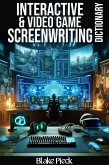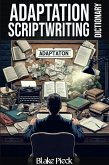Through clear and concise entries, the Dictionary provides readers with a comprehensive and accessible reference to the key concepts and techniques used in writing scripts for the stage. Whether you're writing a one-act play or a full-length production, this dictionary is an invaluable resource for mastering the art of theater scriptwriting.
Play Structure: This section explores the typical structure of a play, including acts, scenes, and beats. Topics include the three-act structure commonly used in playwriting, the role of inciting incidents and turning points in driving the plot, and techniques for creating dramatic tension and conflict within a play's structure.
Stage Directions: Here, readers will learn about the use of stage directions in a play script. Topics include the purpose of stage directions in conveying the physical actions and movements of characters, formatting stage directions correctly within the script, and the role of stage directions in guiding actors and directors in their interpretation of the play.
Monologues and Soliloquies: This section focuses on the use of monologues and soliloquies in playwriting. Topics include the differences between monologues and soliloquies, techniques for writing effective and engaging speeches for characters, and the dramatic function of monologues and soliloquies in revealing character thoughts and motivations.
Staging Considerations: Readers will delve into the practical considerations involved in staging a play. Topics include considerations for set design, lighting, sound, and props, as well as techniques for writing scripts that are easily adaptable to different staging environments and budgets.
Dieser Download kann aus rechtlichen Gründen nur mit Rechnungsadresse in A, B, CY, CZ, D, DK, EW, E, FIN, F, GR, H, IRL, I, LT, L, LR, M, NL, PL, P, R, S, SLO, SK ausgeliefert werden.









